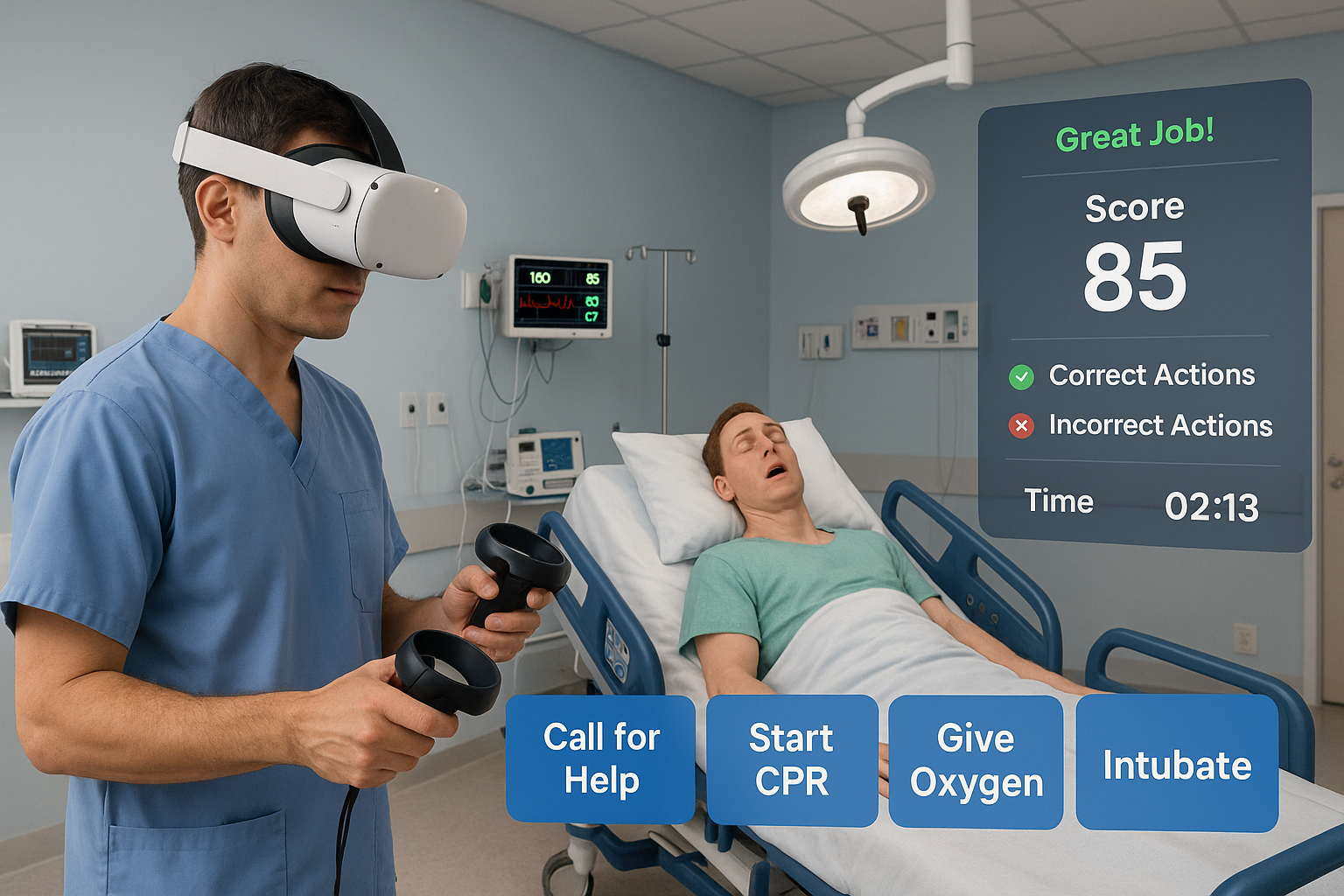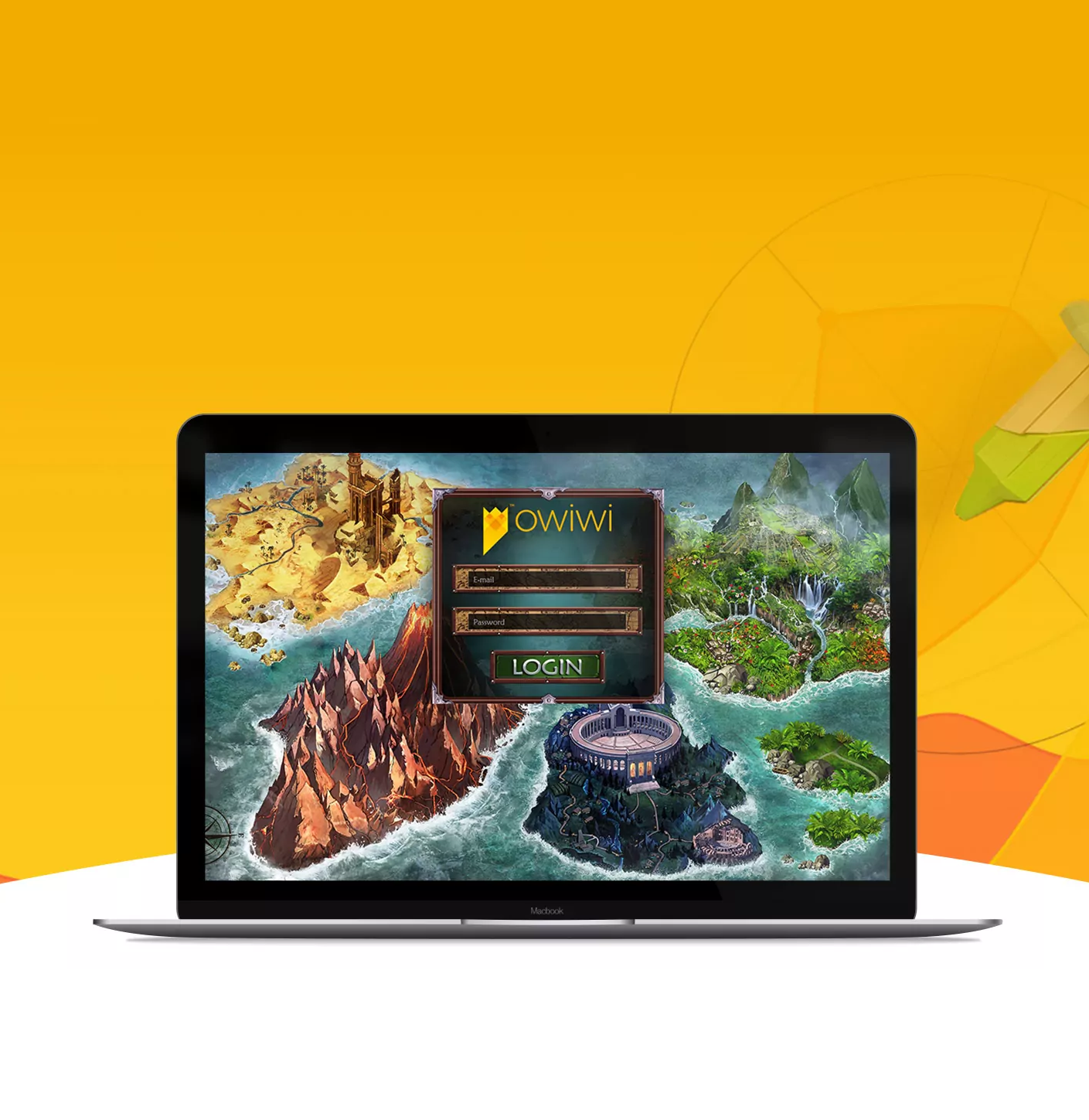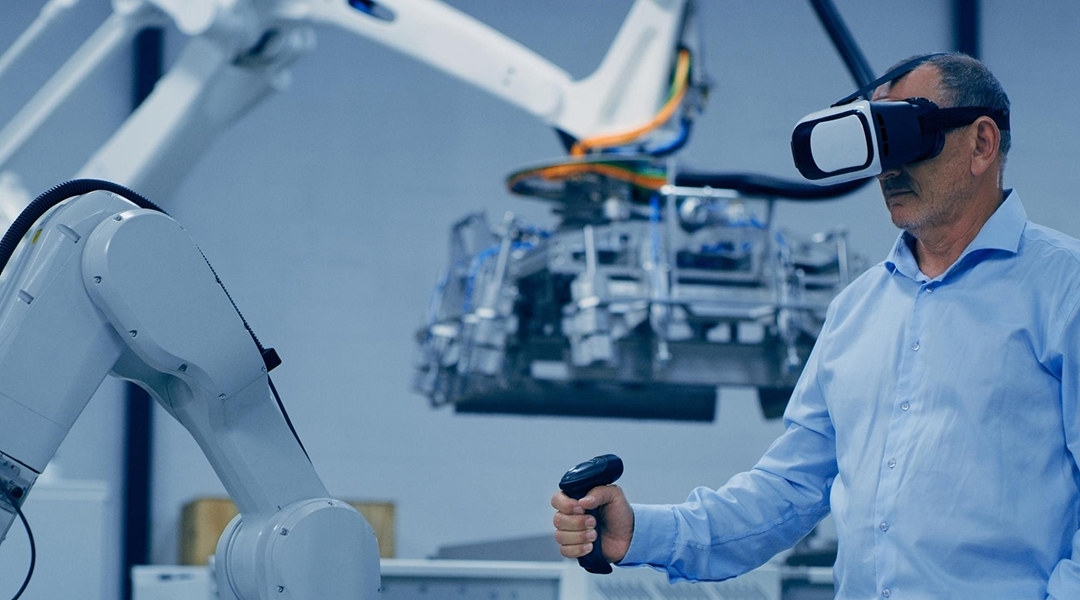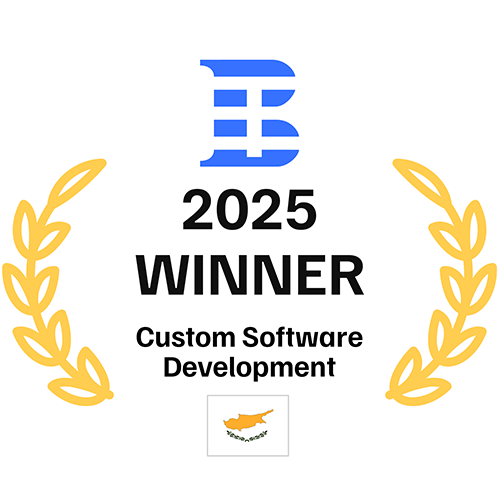Training that doesn’t produce results wastes time, budget, and attention. Many teams now use gamified simulation to improve how people retain knowledge, apply skills, and make decisions. Instead of passive content, learners engage with real scenarios built to reflect their tasks, environments, and tools. The process makes feedback immediate, repetition purposeful, and outcomes easier to measure.
Gamification development services focus on turning training objectives into structured, experience-based simulations. Every interaction is designed to build mastery over time, not just check knowledge once. Whether you’re introducing a new workflow, teaching safety protocols, or training leadership teams, gamified simulation can create a direct path to long-term skill improvement.
You don’t need expensive hardware or complex systems to start. Many solutions now work on desktops, tablets, or standard VR headsets. What matters is the structure behind the simulation, not the visuals alone. With the right planning and vendor, your team can shift from static materials to scalable experiences that reduce mistakes and speed up training cycles.
In this article, we break down what makes gamified training effective and how gamification development services support real progress.
Comparing Gamified Simulation to Traditional Training Methods
Most traditional training methods rely on reading materials, static e-learning, or lecture-based sessions. Gamified simulation replaces those formats with action-driven learning that mirrors real decisions and environments. Instead of memorizing rules or procedures, users interact with consequences, objectives, and in-context feedback.
Gamification in learning development has grown because it closes the gap between knowledge and performance. By structuring experiences around realistic tasks and progression, it helps people understand not only what to do but why to do it.
The gamified simulation does not replace foundational training but improves retention and application after it. Unlike video content or quizzes, simulation-based learning adapts to performance, not just responses.
The Cost-Benefit Factor Over Time
Gamified simulation has a higher upfront cost than traditional formats, but long-term returns often offset the initial investment. The cost structure shifts from recurring instructor time and content updates to one-time development and scalable deployment.
Direct cost advantages include:
- Reduced time-to-competency. Learners complete simulations faster than they finish classroom training.
- Lower re-training frequency. Active interaction increases long-term retention, requiring fewer repeat sessions.
- Minimal instructor oversight. Scenarios can run without constant human supervision.
Long-term benefits also include:
- Consistency across locations. Every learner experiences the same quality and content.
- Fewer real-world mistakes. Safe practice environments reduce on-the-job errors and risks.
- Reusable content. Once created, simulations serve multiple roles and teams without significant rework.
Unlike traditional content, gamified simulations can be versioned, updated, and expanded without rebuilding from scratch. Over a 12–24 month period, most businesses report lower per-learner costs and higher operational impact.
Engagement Levels in Simulations vs. Slides, Quizzes, and Videos
Gamified simulation consistently delivers higher engagement than slides, quizzes, or videos. The structure of simulation demands action, adaptation, and goal-oriented thinking. By contrast, most traditional formats are passive and linear, offering limited interaction or feedback.
Below is a direct comparison of key engagement factors:
| Factor | Gamified Simulation | Slides / Quizzes / Videos |
| User activity | High; requires decision-making and task execution. | Low; mostly passive viewing or simple response. |
| Feedback style | Immediate and based on user performance. | Delayed or generic, often unrelated to context. |
| Learning adaptability | Adjusts to user actions and allows retrying scenarios. | One-size-fits-all content with limited customization. |
| Retention effect | Strong; behavior is linked to results. | Weak; information is often forgotten quickly. |
| Completion rates | Higher; perceived as useful and engaging. | Lower; often skipped or skimmed through. |
| Skill application | Supports real-time problem solving. | Focuses on theory with minimal applied use. |
Gamification in business contexts leads to better learning outcomes because users interact with purpose. Simulation-based learning encourages exploration, while traditional tools mostly measure recall. For performance-driven roles, the difference in outcome is significant.
Why Gamified Simulation Training Is No Longer Just a Trend
 Virtual simultion solutions have moved beyond early adoption. It's now a core part of how many companies approach learning, onboarding, and operational readiness. Early experiments proved that interactive, repeatable environments improve skill retention, especially when built to reflect actual tasks.
Virtual simultion solutions have moved beyond early adoption. It's now a core part of how many companies approach learning, onboarding, and operational readiness. Early experiments proved that interactive, repeatable environments improve skill retention, especially when built to reflect actual tasks. Traditional methods fall short when the goal is long-term behavior change. Simulation training solves that gap by making learning practical, not theoretical. The growing demand shows that this format is no longer optional for teams that need fast, measurable results.
Real Gains from Engagement to Retention
Gamified simulation improves both how users engage with training and how well they retain the material. Unlike traditional formats that rely on passive consumption, simulations require active participation from the start.
Some benefits are:
- Higher focus during sessions. Learners interact with realistic decisions, which improves attention span.
- Increased emotional involvement. Decision-making creates a stronger memory trace than static review.
- Repetition without fatigue. Unlike rereading manuals, repeating a simulation can feel like progression.
Once people engage with training that mirrors their work, they build connections between what they see and what they do. That link increases the chance of correct application after the session.
Retention is stronger because learners receive feedback tied to performance, not just correctness. Each decision carries a visible impact, reinforcing correct choices and exposing mistakes in a safe way.
Gamified simulation structures also support spaced repetition, where key elements return across sessions. That method is proven to increase recall over longer periods, especially in high-pressure roles.
Key Industries Leading the Shift to Simulation-Based Learning
Several industries now treat simulation-based learning as a standard. For teams that need production-grade interactive scenarios, our simulation game development services deliver measurable training outcomes with enterprise integrations. Such programs demand high knowledge retention, minimal error tolerance, and rapid onboarding for new tools or roles.
Sectors seeing the highest adoption include:
- Healthcare. Simulations teach emergency response, equipment use, and patient interaction.
- Manufacturing. Workers use virtual environments to learn machine operations and safety rules.
- Energy. Risk scenarios help teams practice without real-world exposure.
- Defense and security. Tactical simulations prepare staff for time-sensitive decision-making.
- Aviation. Pilots train on scenario-based systems to manage rare but critical events.
Gamification elements in training, like progress tracking, immediate feedback, and dynamic difficulty, are especially practical in these sectors. They turn complex instructions into actions, building operational confidence early.
Adoption also rises where compliance standards are strict. Simulation allows repeated practice of certified processes without risk. Teams can validate readiness and track individual progress more accurately than with manual testing.
As more industries rely on tech-driven systems, the need for training that keeps up has become more urgent. Simulation closes that gap.
The Psychological Drivers That Make Gamification Work
Gamified training is effective because it reflects how people naturally learn and stay motivated. Instead of passively reviewing material, learners interact with systems that respond to their actions.
Three core psychological principles support its effectiveness:
- Autonomy. Users progress at their own pace, which increases ownership and motivation.
- Mastery. Feedback loops show improvement and skill growth over time.
- Purpose. Tasks have immediate, visible goals linked to real outcomes.
Gamified environments also use reward structures to encourage effort and progress. Unlike fixed testing, simulation rewards correct behavior with continued access, improved scores, or unlocks in specific scenarios. These mechanics reflect real motivation patterns better than points or badges alone.
Cognitive load is managed more effectively as well. Information appears when needed and in context, which helps learners avoid overload. Instead of front-loading all material, users discover relevant knowledge as they perform tasks.
By aligning training with natural learning behaviors, gamified simulations increase both engagement and practical understanding. It creates a closed loop where action, feedback, and improvement follow each other without disruption.
Book a call with us to find the perfect gamified simulation for your needs.
What Makes Gamified Simulation Effective in Training Environments
Gamified simulations work because they turn knowledge into repeatable actions. Instead of relying on memorization, it uses structured experience to build competence. The types of gamification used, such as progress tracking, timed tasks, score feedback, and scenario branching, all reinforce behavior that aligns with learning goals.
When properly applied, gamification leads to better comprehension, faster performance improvement, and more consistent results across roles and experience levels. The structure of the simulation fosters genuine skill-building, not just superficial engagement.
Clear Objectives, Measurable Outcomes
The gamified simulation starts with a purpose. Each session has defined objectives that match job requirements or business needs. Users know exactly what they’re working toward and receive visible progress indicators.
The effective structure includes:
- Defined success criteria. Every task has a clear endpoint based on action, not theory.
- Performance tracking. Data is collected throughout the session and used to generate reports.
- Immediate scoring. Feedback shows how well users performed and where they need improvement.
This format eliminates ambiguity. Trainers and managers can review metrics tied to practical benchmarks, such as time to completion, error rate, or process accuracy.
The simulation also supports role-based objectives. That means different users can experience the same environment but pursue different goals based on their responsibilities.
Outcomes are measurable because they are derived from user behavior rather than relying on post-training surveys or self-assessments. The structure allows teams to tie training directly to productivity or compliance metrics over time.
Risk-Free Failure and Learning Loops
One major reason simulation works is that users can fail without consequence. Traditional formats often penalize mistakes or leave little room for correction. Simulated environments allow users to make decisions, observe results, and adjust without impacting real systems or people.
Benefits of risk-free failure are:
- Faster decision-making. Learners experiment with choices they’d hesitate to try in real settings.
- Lower stress. Without punishment, users focus more on learning than avoiding mistakes.
- Deeper understanding. Mistakes lead to pattern recognition and problem-solving.
Gamified training uses learning loops — a structured repetition that reinforces correct behavior through cycles of trial, feedback, and retries.
A typical loop includes:
- Action. The user completes a task or makes a decision.
- Feedback. The system responds with a result, metric, or consequence.
- Adjustment. The user applies a change and repeats the task.
Instead of isolated lessons, training becomes a controlled test environment. Each loop builds memory and confidence while revealing areas where skills still need work.
Gamification elements keep learners engaged throughout these loops, adding pacing, rewards, and visible progress without turning training into a game.
Scenario Design That Mirrors Real-Life Challenges
Simulation becomes effective only when it reflects real-world conditions. That means more than just visuals. The tasks, pacing, risks, and constraints must align with how people work.
High-quality scenario design includes:
- Contextual accuracy. Scenarios follow actual workflows, not generic instructions.
- Consequential tasks. Every action affects the environment or outcome.
- Realistic pacing. Timed events and decision pressure match daily operations.
Users must identify and solve problems within familiar environments. Whether it’s a customer interaction, equipment repair, or emergency protocol, the simulation should mirror the choices and limitations they face in their roles.
Well-built scenarios also use branching logic. That means different outcomes unfold based on decisions. The result is an experience that responds to behavior, not just answers.
Simulation avoids the "one path to success" problem often seen in traditional training. Instead, it reflects the complexity of real situations, helping users develop practical judgment and awareness.
Gamification adds structure, like score thresholds or scenario unlocks, without turning the training into a game. It keeps the focus on performance while still maintaining engagement.
Program-Ace Presents: Gap Inc.’s Emergency Preparedness Training

Gap Inc. needed a universal way to train staff for emergencies across retail, office, and warehouse sites. Program-Ace delivered a first-person simulation based on the Run. Hide. Fight. model, combining realistic environments with interactive decision-making to strengthen safety and response skills.
Core Elements of Gamification Development Services
Gamification development services offer more than just game design. They focus on aligning training systems with business goals through structured mechanics, user feedback, and experience-based learning. Every feature is carefully selected to serve a specific purpose, whether it’s enhancing skill acquisition, improving retention, or increasing engagement.
Recruitment gamification is also playing a growing role, particularly in attracting and evaluating candidates. Simulation scenarios can reveal problem-solving skills, behavior under pressure, and decision-making speed better than standard interviews or questionnaires.
Game Mechanics That Support Business Goals
Game mechanics used in training are designed to create engagement while serving a direct performance function. Unlike entertainment games, their purpose is to support specific outcomes, such as faster onboarding, improved accuracy, or better compliance.
Common mechanics that align with goals include:
- Progress tracking. Shows how learners move through tasks, helping identify drop-off points.
- Timed tasks. Builds decision-making speed and simulates real-world pressure.
- Performance scores. Ties outcomes to actual skill levels, not just completion.
- Unlockable scenarios. Reinforces mastery before advancing to higher complexity.
- Leaderboards. Encourages participation and visibility in team environments.
Each mechanic must match the learning context. For example, leaderboards work well for sales team challenges but are less suitable for safety training. Gamification development services tailor these features to fit both the user profile and the organization’s performance metrics.
Success is measured not by entertainment value but by how well the mechanics reinforce the right behaviors and decision-making patterns inside the simulation.
Customization for Different Learning Styles and Roles
Training is more effective when it adapts to how people learn. Gamified simulations support that by customizing experiences to match individual learning styles and specific job roles.
Essential customization methods include:
- Role-based content. Users receive tasks and scenarios based on their actual position.
- Adaptive feedback. Responses change based on skill level or repeated mistakes.
- Multiple input methods. Supports keyboard, touchscreen, VR controllers, or speech if needed.
- Instructional pacing. Slower onboarding for new users; fast-tracked paths for experienced ones.
- Visual and textual options. Supports both visual learners and those who need detailed guidance.
Customization also helps during recruitment gamification. Simulations can be tailored to test for specific traits like teamwork, speed, or compliance under stress. Instead of generic quizzes, candidates engage with realistic tasks that expose actual capabilities.
Gamification development services include user profiling and scenario mapping as part of their process. That ensures the final product fits your environment, tools, and user expectations. Flexibility is essential not only for learning outcomes but also for overall adoption across departments or locations.
Gamified Simulation for Upskilling and Reskilling in a Changing Workforce

Roles evolve, systems update, and tools change, often faster than teams can adjust. Virtual simulation solutions offer a way to close that gap without disrupting workflows. Teams can train in controlled, repeatable environments without needing real-world access or instructor-led sessions.
Gamified simulation helps employees build new skills or refine existing ones without downtime. As industries face skill shortages or challenges in adopting new technology, simulation becomes a reliable way to train at scale and at a pace that suits their needs.
Adapting to New Tools, Systems, and Roles Through Simulation
Workforces today need to shift quickly between systems, tools, and workflows. Simulation-based training provides a hands-on experience with those systems before people apply them on the job.
Virtual simulation solutions are especially valuable during mergers, technology upgrades, or operational changes. Instead of pausing work to train everyone manually, simulation allows parallel upskilling with minimal disruption.
Gamification adds incentive and structure. Tasks are broken into levels, scored, and repeated until correct behavior becomes consistent. That approach increases retention and builds confidence before employees ever interact with the real system.
By isolating complex procedures in a risk-free space, simulation prevents early-stage errors and shortens the time needed to reach full productivity. The model works across departments and experience levels.
Soft Skills Training Through Gamified Scenarios
Soft skills are more challenging to teach using checklists or slide decks. Effective communication, conflict resolution, and leadership require real-time decision-making and situational awareness. Gamified simulations create structured environments where users can practice their skills and receive feedback.
Typical applications are:
- Customer service response. Handling complex requests or complaints in time-limited settings.
- Team communication. Choosing tone, response style, or escalation method.
- Leadership decisions. Managing teams, setting priorities, or delivering feedback.
Each scenario presents a realistic interaction and tracks user behavior. Feedback highlights tone, pacing, empathy, and the approach to resolution. Learners observe which strategies are effective and how different choices impact the outcome.
Gamification reinforces progress without relying on vague ratings or self-assessment. Instead of abstract traits, users complete specific tasks under pressure and adjust their approach based on system responses.
Soft skills training through simulation works well for both new hires and experienced professionals. Everyone gets a private space to test and improve without reputational risk. Repetition and variation allow skills to grow with confidence. Over time, those interactions become part of how people handle real situations because they’ve practiced them, not just heard about them.
Program-Ace Presents: Owiwi’s Gamified HR Platform

Owiw is not a standard recruitment tool but a gamified assessment platform built to identify soft skills through immersive storytelling. Program-Ace joined the development to create high-quality 2D/3D visuals, animations, and a unified interface.
How to Choose the Right Gamified Simulation Development Partner
Finding the right vendor makes the difference between polished tools and practical training systems. Look for teams with both technical depth and proven impact. They should offer clear deliverables, transparent processes, and support for your goals, whether that’s faster onboarding, compliance, or performance boosting.
Technical Capabilities and Toolsets You Should Expect
A strong development partner builds solutions that work well across your tech stack. They should offer a mix of platforms, tools, and technical options to fit your needs.
Essential capabilities may encompass:
- Cross-platform compatibility. Support for web, desktop, mobile, and VR if needed.
- Data integration. Connection with LMS, HR systems, and analytics platforms.
- Modular design. Scenario elements that can be updated or reused independently.
- Scalable architecture. Ready to support different user counts and geographical locations.
- Security and compliance. Data encryption, privacy standards, and traceable interactions.
Look for providers who demonstrate these skills before starting. A vendor's tech stack shapes how your simulation performs and evolves. Clear toolsets, revision controls, and deployment processes are essential to manage improvements over time.
Case Study Review: What Success Looks Like
Oxford Medical Simulation, founded in 2017, built a virtual reality training platform for doctors and nurses. It originally launched in the UK but shifted to the US market after securing contracts with several large healthcare systems.
Fundamental outcomes are:
- Real-world readiness. Users complete VR scenarios that recreate hospital environments and patient interactions without any risk.
- Enhanced decision-making. Clinicians practice diagnosis, procedures, and communication under realistic timelines.
- Strong adoption metrics. The production rollout in multiple US hospitals has shown sustained use and positive feedback from medical teams.
Because the NHS procurement framework slowed deployment, Oxford Medical Simulation focused on US systems, where the platform found faster uptake and larger contracts. When evaluating a development partner, look for real-world outcomes similar to those above: evidence of standardized environments, measurable skill improvement, and widespread adoption in operational settings.
Why It Pays to Invest in Gamified Simulation with Program-Ace
Program-Ace acts as an innovative solutions integrator by turning training challenges into structured, high-impact simulation systems. Our team combines technical capability with practical learning design, ensuring that your simulation reflects real tasks, outcomes, and measurable goals.
We support multiple platforms, such as desktop, web, mobile, and VR, and integrate with your existing LMS, HR tools, and analytics systems. Whether you need to onboard faster, reduce training costs, or upskill at scale, we build simulations that work under real business conditions.
Every solution we develop includes clear metrics, user feedback loops, and a customization layer that fits different departments and roles. You won't get an off-the-shelf game reskinned for training. You get a scenario-based system that fits your exact needs.
Our track record includes safety-critical industries, regulated environments, and complex enterprise operations. Contact us to discover how a simulation tailored to your team can reduce onboarding time, enhance task performance, and mitigate operational risk.
























